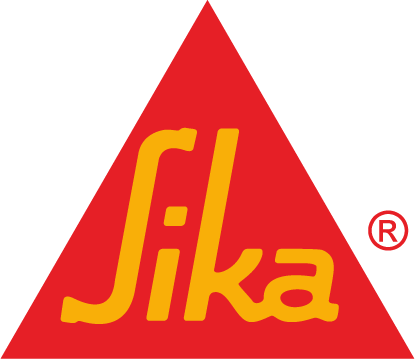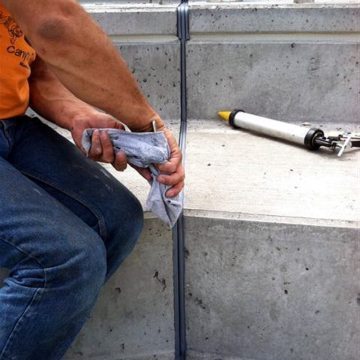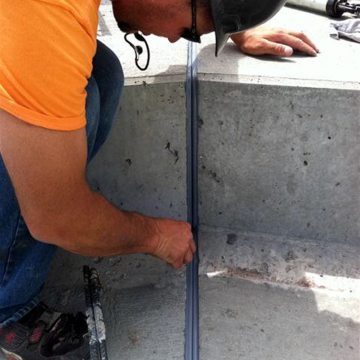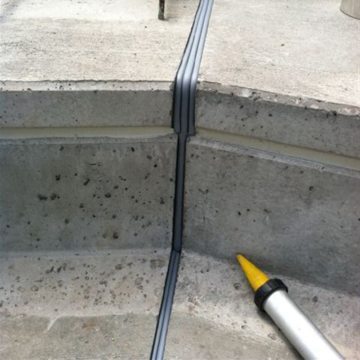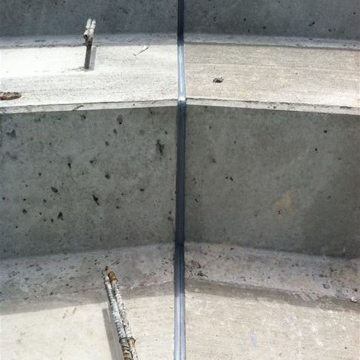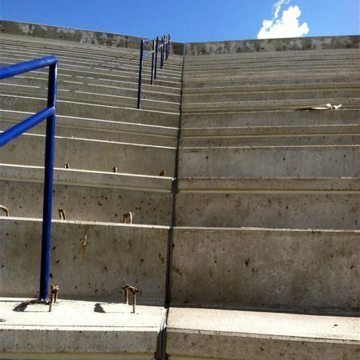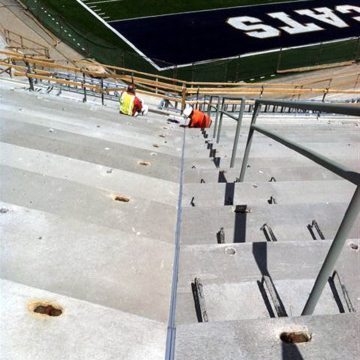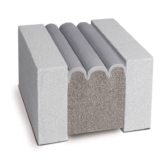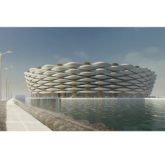Montana State University Bobcat Stadium, Bozeman, MT
Montana
Date: 2011
Replacing Failed Caulk Joints in Precast Bowl of MSU Bobcats Stadium
Liquid sealant, or “caulk” as it is commonly referred to is the most commonly used material for the sealing of building components.
It’s performance is often disappointing in joints that move, however, as the result of it’s reliance on ideal installation as well as adhesion in tension. Tensile stresses at the bond line and within the cured sealant usually result in adhesive or cohesive failure or both.
It is not surprising that facility owners and managers are looking for a more durable alternative. They have found it in EMSEAL precompressed, hybrid sealants.
These products take the best characteristics of one of the best liquid sealants (silicone), and combine it with the best characteristics of the best precompressed, impregnated foam sealant on the market.
The result is a hybrid sealant system that exploits the advantages of both technologies while eliminating their respective shortcomings.
Installation of the DSM System to replace failed caulk joints in the precast bowl of Montana State University’s Bobcats stadium is illustrated in the following photographs.
MSU joins the Green Bay Packers, New York Yankees, Oakland Raiders and hundreds of others who are “thinking outside the bucket” when it comes to joint sealing.
Supplied, precompressed to smaller than the field-measured joint sizes, the DSM System is installed into epoxy-primed joint faces
Inside and outside corners are handled in the field using prescribed methods or can be addressed using factory-fabricated customer or Universal-90 transitions pieces.
The result is continuity of seal from field to parapet using material that is weather, UV, and traffic durable. And, unlike liquid sealants, or caulk, is virtually free of the tensile stresses that shorten life span.
EMSEAL precompressed sealants are the standard for durability in large and small, wall and deck, watertight joint sealing. Wax-saturated, precompressed alternatives do not come close in performance and come with major risks of bleeding and staining.
There are many reasons that the facility managers of hundreds of stadiums choose EMSEAL. It is the same reason that thousands of managers and owners choose EMSEAL for any other type of structure as well.
Revenue loss in affected concession areas, damage to equipment in storage rooms, disgruntled athletes and fans are all consequences of leaks at expansion joints. Energy loss, structural deterioration, and costly repairs are all the result of short-term thinking in expansion joint selection.
Elimination of these problems in new sports venue construction as well as in retrofit of existing structures is a central focus of EMSEAL’s.
The company’s unique approach to sports facility expansion joint treatment combines innovative materials technologies with a fresh look at the roles of owners, designers, general contractors, manufacturers and subcontractors, in achieving trouble-free expansion joints.
The approach is grounded in a collaborative process centered on joint treatment that requires all of these parties to think, design, detail, specify, construct, fabricate, and install three-dimensional solutions.

